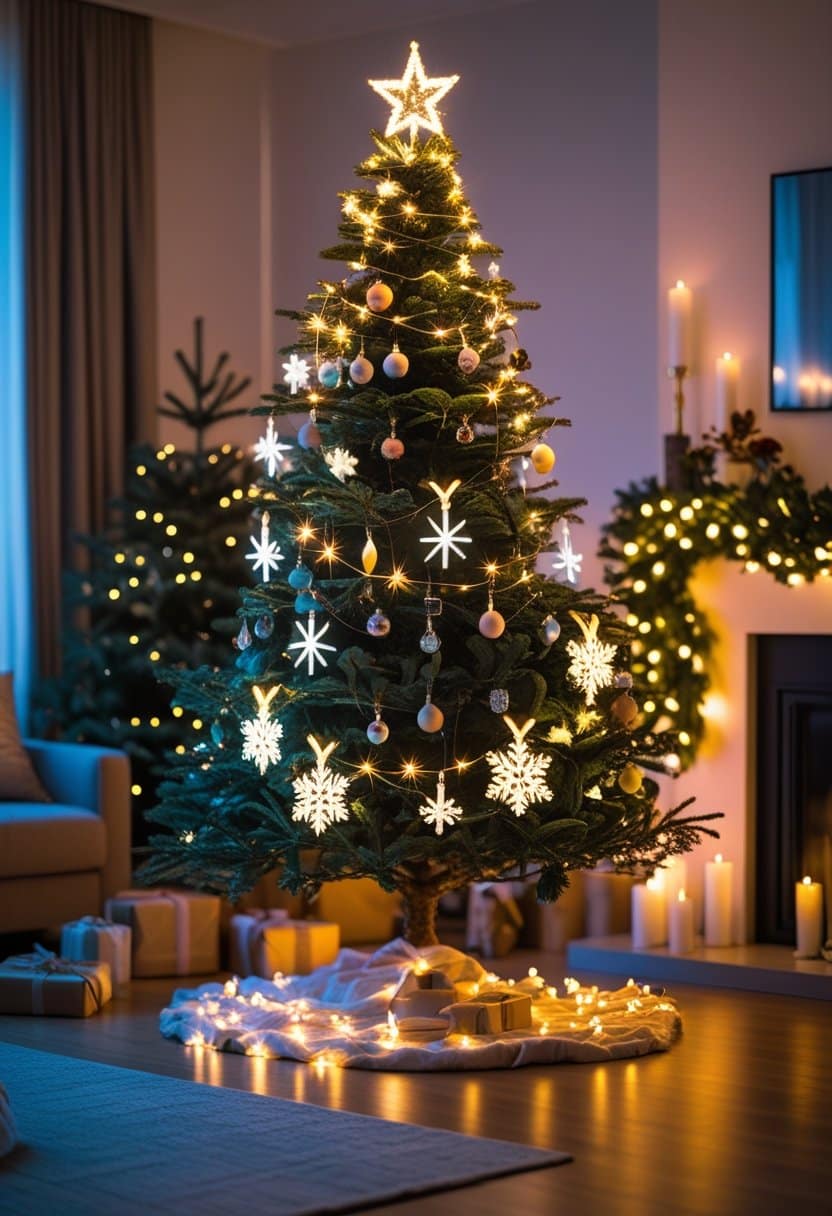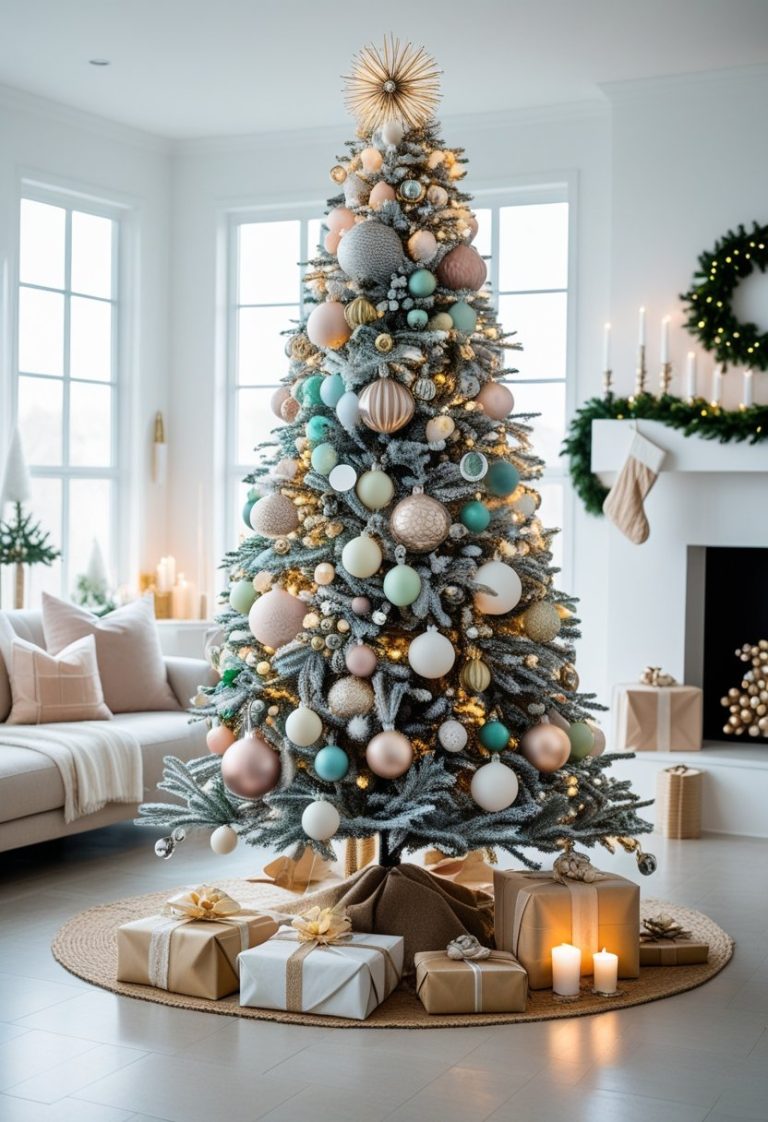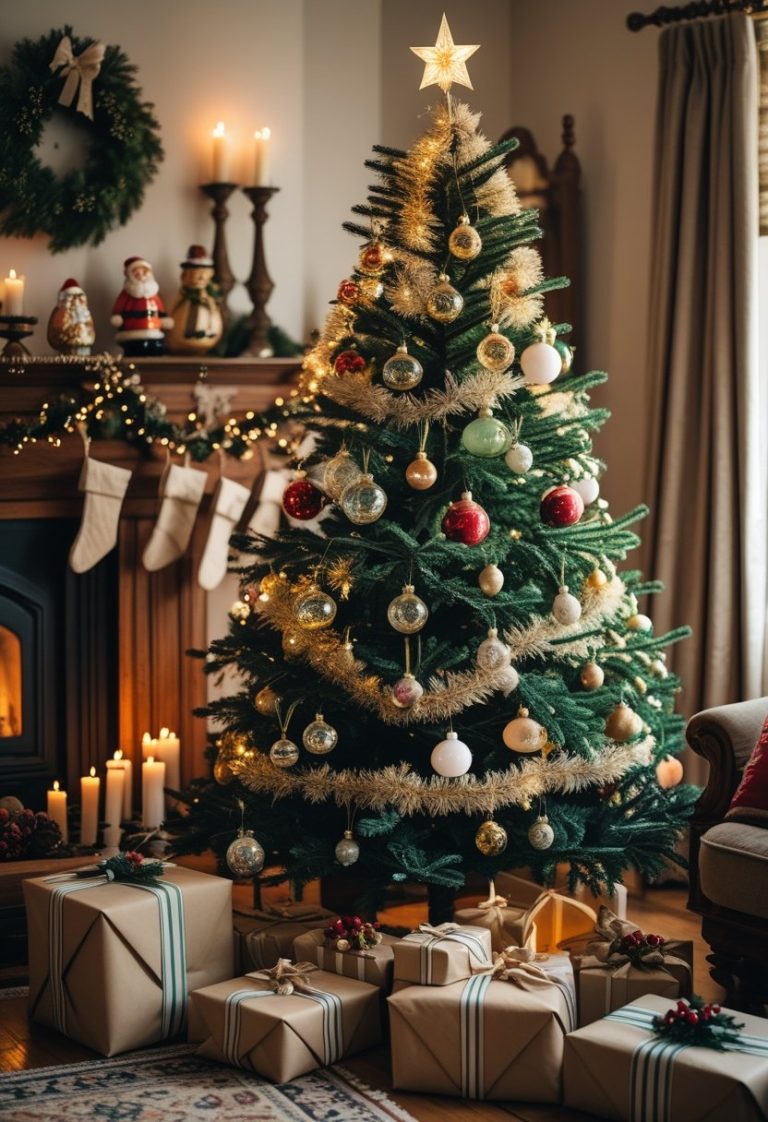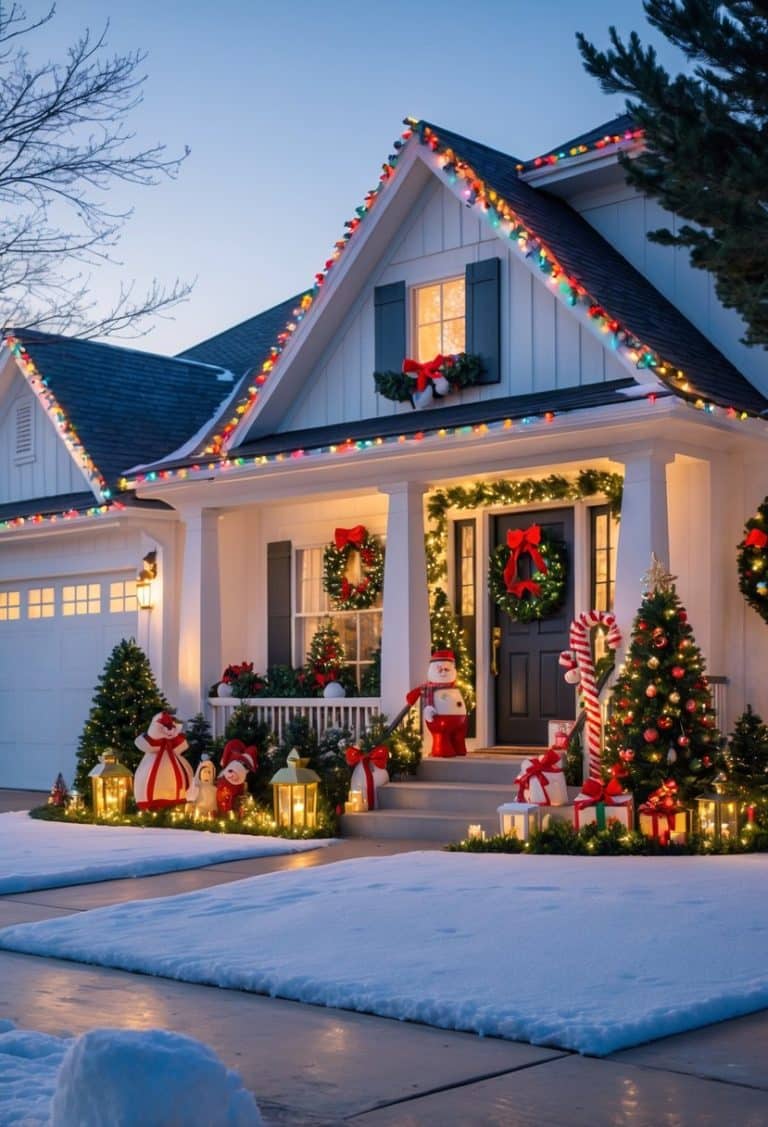Christmas Tree Lights Ideas 2025: 23 Creative Ways to Brighten Your Holiday Decor

Christmas tree lights in 2025 bring more variety and creativity than ever, offering options that fit any style or space. From simple setups to advanced features, lighting choices now make it easy to create a look that feels both personal and festive. The right lights can completely change the atmosphere of a tree and set the tone for the entire holiday season.

This article explores practical ideas, from timeless classics to modern innovations, that help make decorating easier and more enjoyable. By looking at different styles, setups, and helpful tips, it shows how anyone can create a tree that feels both inviting and well put together.
Classic white LED string lights for an elegant glow

White LED string lights create a clean and timeless look on any Christmas tree.
They provide consistent brightness while using less energy than traditional bulbs.
Many people choose them for both indoor and outdoor decorating because they blend well with different styles.
Multicolor mini lights for a vibrant tree

Multicolor mini lights give a Christmas tree a bright and playful look. They often include red, green, blue, orange, and pink bulbs.
Both LED and incandescent options are available, making it easy to match personal style or energy needs.
These lights work well for wrapping trees, wreaths, and garlands indoors or outdoors.
Warm white fairy lights for a cozy atmosphere

Warm white fairy lights give a soft glow that feels inviting. They work well on Christmas trees, mantels, or around windows.
Many people choose them for a classic look. The gentle light blends easily with ornaments and greenery.
These lights also fit both indoor and outdoor spaces, making them versatile.
Battery-operated lights for flexible placement

Battery-operated lights let people decorate without needing outlets nearby. They work well on trees placed in corners or areas far from plugs.
Because they run on batteries, the lights can be moved easily. This makes them useful for wreaths, garlands, or tabletop trees.
Their small battery packs stay hidden, keeping the display neat and uncluttered.
Twinkling lights with random blink settings

Twinkling lights with random blink settings create a soft, shifting glow that feels natural. Each bulb blinks at a slightly different pace, so the pattern does not look uniform.
Some sets use built-in chips to control timing, while others rely on small oscillators in each bulb. This makes the lights drift in and out of sync.
Icicle string lights for a wintery effect

Icicle string lights hang vertically, creating a look that resembles falling ice or dripping water.
They work well along the edges of branches, giving the Christmas tree a soft, layered glow.
Many people pair them with cool white bulbs to highlight a crisp, wintery style.
LED net lights for quick tree coverage

LED net lights create an even grid of bulbs that drape over trees with minimal effort.
They provide consistent spacing, which helps avoid gaps or uneven brightness.
Many sets come in outdoor-rated designs, making them suitable for bushes, trunks, or small trees.
Vintage-style incandescent bulbs for nostalgia

Many people choose vintage-style incandescent bulbs to bring a classic look to their Christmas tree.
C7 and C9 bulbs remain popular for their warm glow and larger size, which stand out compared to smaller modern lights.
Some newer LED options now mimic the soft color of incandescent bulbs while staying cooler and more energy-efficient.
Color-changing RGB lights with remote control

Color-changing RGB lights let users switch between colors and patterns with ease. Many sets now include remotes for quick adjustments.
These lights often feature multiple modes such as fading, flashing, or steady glow. Adjustable brightness and timers add more control.
Families appreciate the simple setup and flexibility. A remote makes it easy to change settings without touching the tree.
Solar-powered Christmas tree lights for eco-friendliness

Solar-powered Christmas tree lights use small panels to collect sunlight during the day. They store energy in built-in batteries for use at night.
These lights reduce electricity use and work well in areas without outlets. Many models run for several hours after a full day of charging.
Curtain lights draped vertically on the tree

Curtain lights can hang from the top of the tree and fall straight down to the bottom. This creates even coverage without wrapping strands around branches.
They give the tree a clean, uniform glow. Many people find this method faster and easier than traditional stringing.
Cluster string lights for dense illumination

Cluster string lights place LEDs close together, creating a fuller and brighter look on the tree.
They work well for people who want more coverage without using multiple strands.
Many sets come in warm white or multicolor, making them flexible for different styles.
Copper wire lights for subtle sparkle

Copper wire lights bend easily, allowing them to wrap around branches without adding bulk. Their thin design helps them blend into the tree.
The small LED bulbs give off a soft glow that creates a gentle sparkle. They work well for both modern and traditional tree styles.
Smart app-controlled lights for customization

Smart app-controlled lights let users change colors, brightness, and patterns from their phone.
Many models connect through Bluetooth or Wi-Fi, making setup simple.
Some options allow mapping lights on the tree so effects move in specific ways.
These features give people more control over their holiday displays.
Lights with built-in timers for convenience

Many Christmas tree lights in 2025 come with built-in timers. This feature allows users to set lights to turn on and off automatically.
Timers reduce the need for manual control and help save energy. They also make it easier to keep a consistent lighting schedule each day.
Wrap lights tightly around branches for depth

Wrapping lights closely around branches highlights the tree’s shape.
This method adds definition and makes the structure more visible at night.
Placing some lights deeper inside the branches creates layers and a sense of depth.
Use larger globe lights for a modern look

Larger globe lights give Christmas trees a clean and balanced style. Their round shape spreads light evenly across branches.
They work well with both simple and colorful themes. Many people use them to create a softer glow that feels modern but still inviting.
Incorporate lighted garlands with your lights

They can weave lighted garlands through the tree to add depth and texture. The mix of greenery and lights creates a layered look.
Some choose classic white bulbs, while others prefer warm or colored tones. Both options blend well with standard string lights.
Placing garlands evenly helps the tree look balanced without overwhelming the decorations.
Add lighted ornaments for extra shine

Lighted ornaments bring a soft glow directly onto the branches, adding depth to the tree. They work well with both classic white lights and colorful strands.
Many designs include small LED bulbs inside clear or frosted shapes. These ornaments spread light evenly and highlight nearby decorations.
They also reduce the need for extra string lights. This makes the tree look bright without feeling crowded.
Use light clips to secure strands neatly

Light clips help keep Christmas tree lights in place without slipping or sagging. They provide a simple way to create even spacing across branches.
By attaching strands with clips, the tree looks more organized and balanced. This method also reduces the chance of tangled wires during setup or removal.
Place lights evenly from trunk to tip

They should begin by placing lights close to the trunk to create depth.
From there, they can weave the strand outward along the branches.
Bringing the lights back toward the trunk before moving to the next branch helps keep spacing balanced.
Combine warm and cool white lights creatively

Mixing warm and cool white lights can add depth to a Christmas tree. Warm white offers a soft glow, while cool white gives a crisp brightness.
They can place warm lights closer to the trunk and cool lights toward the tips. This creates contrast without looking unbalanced.
Use battery packs hidden in tree base

They can place battery packs at the base of the tree to keep them out of sight. A basket, box, or fabric wrap helps cover the packs without blocking access.
This method keeps wires neat and allows easy replacement when batteries run out.
Choosing the Right Christmas Tree Lights

The type of bulb and the choice of color scheme affect how a tree looks and how easy the lights are to maintain. Practical factors like energy use, lifespan, and style should guide the decision.
LED vs. Incandescent Options
LED lights have become the most common choice because they use less electricity and last longer than incandescent bulbs. They stay cool to the touch, which makes them safer for indoor trees. Many families prefer them because they can run for years without needing replacements.
Incandescent lights give off a warmer glow that some people find more natural. They are often less expensive at purchase but burn out faster and use more energy. This means they may cost more to run over the season.
A quick comparison:
| Feature | LED Lights | Incandescent Lights |
|---|---|---|
| Energy Use | Low | High |
| Lifespan | 10+ years (with care) | 1–3 seasons |
| Heat Output | Cool | Warm/Hot |
| Upfront Cost | Higher | Lower |
Those who want efficiency and long-term value usually choose LED. Those who prefer a traditional, softer glow may still select incandescent despite higher energy use.
Selecting the Best Color Schemes
Color choice changes the entire look of a Christmas tree. White or warm white lights create a classic, simple style that works well with most ornaments. Multicolor strands bring a more playful and festive appearance, often popular with families and children.
Some people use themed color schemes, such as gold and champagne for a refined look or blue and silver for a cooler winter style. These schemes often match ribbon, ornaments, or other decorations on the tree.
Smart LED lights now allow color-changing options. With a remote or app, users can switch between white, multicolor, or custom patterns. This flexibility makes it easier to adjust the tree’s look for different gatherings or moods.
When selecting colors, it helps to match the lights with the overall room decor. A consistent palette makes the tree feel balanced, while mixing too many colors can appear cluttered.
Safety and Installation Tips

Safe holiday lighting depends on careful planning of power use and protection against outdoor conditions. Both indoor and outdoor displays benefit from following basic electrical guidelines and choosing materials designed to handle weather exposure.
Proper Power Management for Light Displays
Managing electricity use reduces fire risks and prevents damage to light strings. Each light set comes with a maximum number of strands that can be safely connected end-to-end. Exceeding this limit can overload wires and outlets.
A simple rule is to check the wattage of all lights on a single circuit. Most household circuits handle about 1,500 watts safely. Adding up the total wattage of connected lights helps avoid tripped breakers or overheated cords.
Using outdoor-rated extension cords and plugging lights into ground-fault circuit interrupter (GFCI) outlets provides extra safety. GFCIs shut off power if they detect a problem, lowering the chance of electrical shock.
It also helps to spread lights across multiple outlets instead of relying on a single source. This balances the load and keeps cords cooler.
Weatherproofing Outdoor Lights
Outdoor lights need protection from rain, snow, and wind. Choosing UL-listed outdoor light sets ensures the wiring and sockets are designed for moisture resistance. Indoor-only lights should never be used outside.
Connections between cords should be sealed with weatherproof covers or electrical tape to block water. Wrapping plugs in plastic bags is unsafe, as condensation can still seep inside.
Clips made for gutters, shingles, or siding hold lights securely without damaging surfaces. Avoid staples or nails, which can pierce wires and create hazards.
For areas with heavy snow or strong wind, lights should be fastened tightly and checked often. Loose strands can break, short out, or become tangled in ice buildup.






